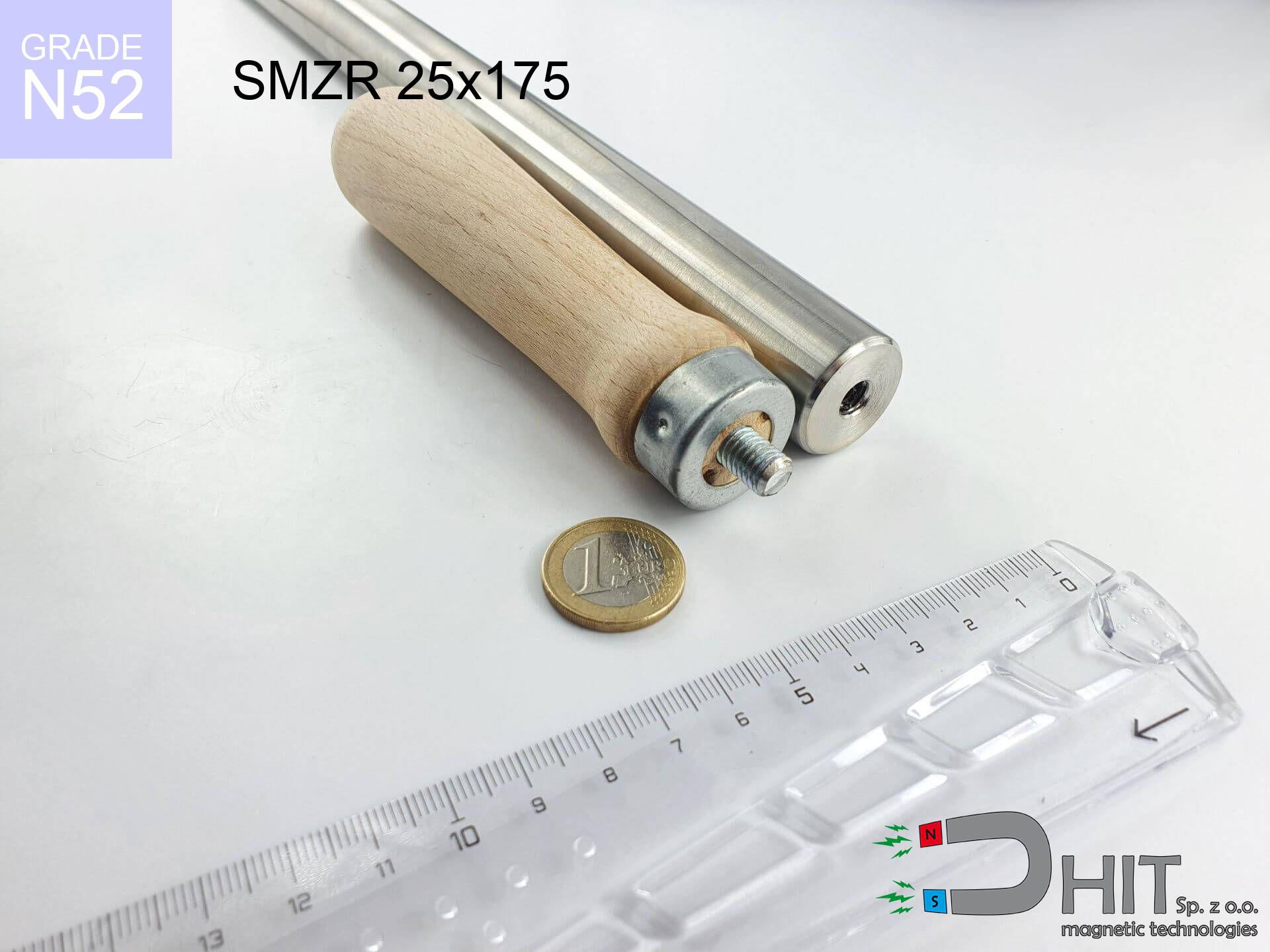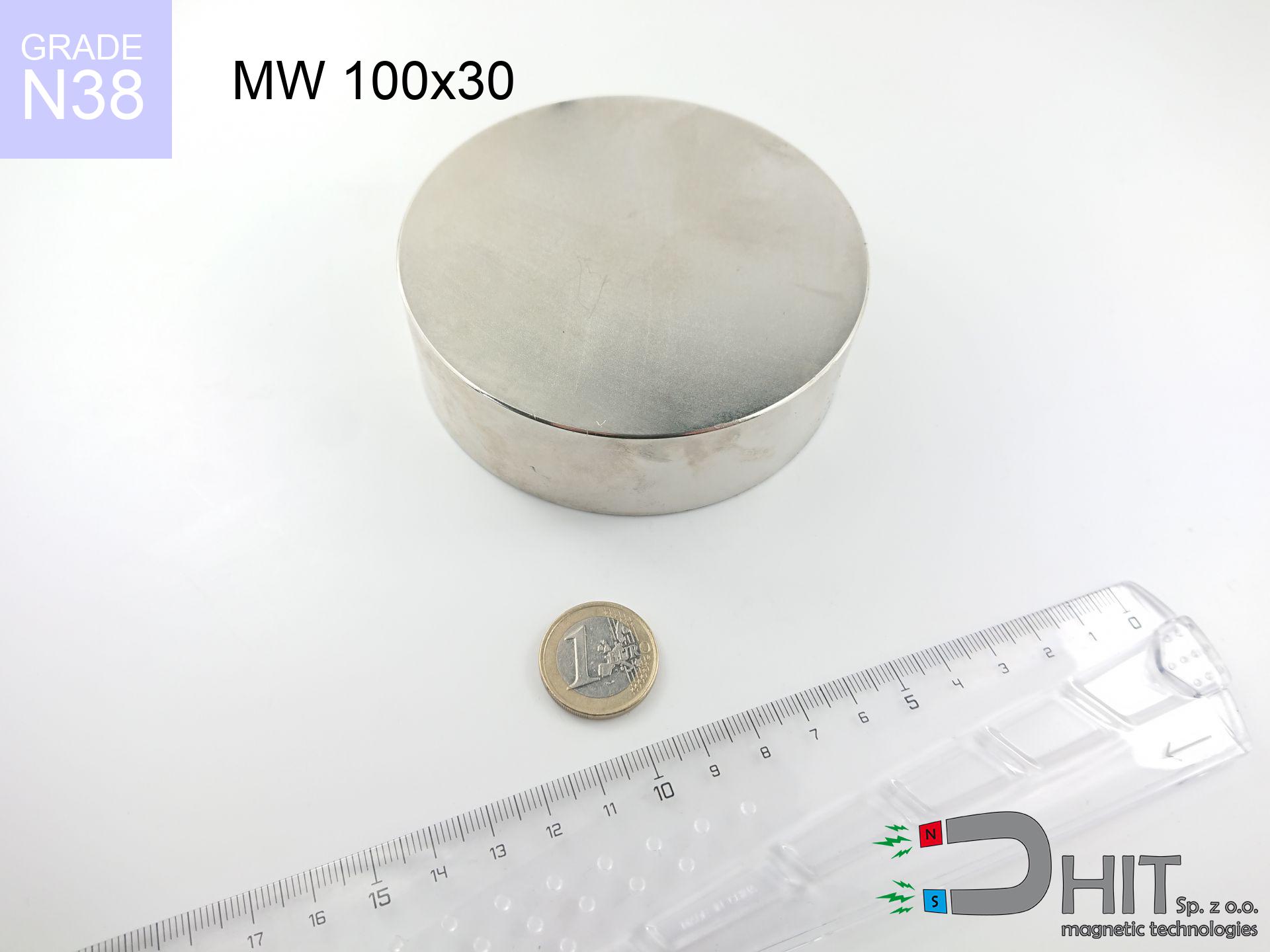SMZR 25x175 / N52 - magnetic separator with handle
magnetic separator with handle
Catalog no 140443
GTIN/EAN: 5906301813491
Diameter Ø
25 mm [±1 mm]
Height
175 mm [±1 mm]
Weight
0.01 g
Magnetic Flux
~ 8 500 Gauss [±5%]
492.00 ZŁ with VAT / pcs + price for transport
400.00 ZŁ net + 23% VAT / pcs
bulk discounts:
Need more?
Give us a call
+48 888 99 98 98
alternatively let us know using
our online form
our website.
Specifications along with form of magnets can be estimated using our
magnetic mass calculator.
Same-day shipping for orders placed before 14:00.
Technical details - SMZR 25x175 / N52 - magnetic separator with handle
Specification / characteristics - SMZR 25x175 / N52 - magnetic separator with handle
| properties | values |
|---|---|
| Cat. no. | 140443 |
| GTIN/EAN | 5906301813491 |
| Production/Distribution | Dhit sp. z o.o. |
| Country of origin | Poland / China / Germany |
| Customs code | 85059029 |
| Diameter Ø | 25 mm [±1 mm] |
| Height | 175 mm [±1 mm] |
| Weight | 0.01 g |
| Material Type | Stainless steel AISI 304 / A2 |
| Magnetic Flux | ~ 8 500 Gauss [±5%] |
| Size/Mount Quantity | M8x2 |
| Polarity | circumferential - 6 poles |
| Casing Tube Thickness | 1 mm |
| Manufacturing Tolerance | ±1 mm |
Magnetic properties of material N52
| properties | values | units |
|---|---|---|
| remenance Br [min. - max.] ? | 14.2-14.7 | kGs |
| remenance Br [min. - max.] ? | 1420-1470 | mT |
| coercivity bHc ? | 10.8-12.5 | kOe |
| coercivity bHc ? | 860-995 | kA/m |
| actual internal force iHc | ≥ 12 | kOe |
| actual internal force iHc | ≥ 955 | kA/m |
| energy density [min. - max.] ? | 48-53 | BH max MGOe |
| energy density [min. - max.] ? | 380-422 | BH max KJ/m |
| max. temperature ? | ≤ 80 | °C |
Physical properties of sintered neodymium magnets Nd2Fe14B at 20°C
| properties | values | units |
|---|---|---|
| Vickers hardness | ≥550 | Hv |
| Density | ≥7.4 | g/cm3 |
| Curie Temperature TC | 312 - 380 | °C |
| Curie Temperature TF | 593 - 716 | °F |
| Specific resistance | 150 | μΩ⋅cm |
| Bending strength | 250 | MPa |
| Compressive strength | 1000~1100 | MPa |
| Thermal expansion parallel (∥) to orientation (M) | (3-4) x 10-6 | °C-1 |
| Thermal expansion perpendicular (⊥) to orientation (M) | -(1-3) x 10-6 | °C-1 |
| Young's modulus | 1.7 x 104 | kg/mm² |
Table 1: Rod construction
SMZR 25x175 / N52
| Parameter | Value | Description / Unit |
|---|---|---|
| Diameter (Ø) | 25 | mm |
| Total length | 175 | mm (L) |
| Active length | 155 | mm |
| Section count | 6 | modules |
| Dead zone | 20 | mm (Blaszka 2mm + Gwint 18mm) |
| Weight (est.) | ~653 | g |
| Active area | 122 | cm² (Area) |
| Housing material | AISI 304 | 1.4301 (Inox) |
| Surface finish | Ra < 0.8 µm | Polished |
| Temp. class | 80°C | Standard (N) |
| Force loss (at max °C) | -12.8% | Reversible loss (physics) |
| Force (calculated) | 18.1 | kg (theor.) |
| Induction (surface) | ~8 500 | Gauss (Max) |
Chart 2: Field profile (6 sections)
Chart 3: Temperature performance
Material specification
| iron (Fe) | 64% – 68% |
| neodymium (Nd) | 29% – 32% |
| boron (B) | 1.1% – 1.2% |
| dysprosium (Dy) | 0.5% – 2.0% |
| coating (Ni-Cu-Ni) | < 0.05% |
Sustainability
| recyclability (EoL) | 100% |
| recycled raw materials | ~10% (pre-cons) |
| carbon footprint | low / zredukowany |
| waste code (EWC) | 16 02 16 |
View more deals
Advantages as well as disadvantages of neodymium magnets.
Benefits
- Their power remains stable, and after around 10 years it drops only by ~1% (according to research),
- They have excellent resistance to magnetism drop due to opposing magnetic fields,
- Thanks to the reflective finish, the coating of Ni-Cu-Ni, gold, or silver gives an elegant appearance,
- Magnets exhibit impressive magnetic induction on the active area,
- Thanks to resistance to high temperature, they are able to function (depending on the shape) even at temperatures up to 230°C and higher...
- Possibility of accurate modeling as well as adapting to defined requirements,
- Fundamental importance in innovative solutions – they find application in magnetic memories, brushless drives, advanced medical instruments, also multitasking production systems.
- Compactness – despite small sizes they offer powerful magnetic field, making them ideal for precision applications
Weaknesses
- To avoid cracks upon strong impacts, we recommend using special steel holders. Such a solution secures the magnet and simultaneously increases its durability.
- We warn that neodymium magnets can reduce their strength at high temperatures. To prevent this, we advise our specialized [AH] magnets, which work effectively even at 230°C.
- When exposed to humidity, magnets usually rust. For applications outside, it is recommended to use protective magnets, such as magnets in rubber or plastics, which secure oxidation and corrosion.
- Due to limitations in realizing threads and complicated shapes in magnets, we propose using cover - magnetic holder.
- Possible danger to health – tiny shards of magnets are risky, if swallowed, which is particularly important in the context of child health protection. Furthermore, tiny parts of these magnets can be problematic in diagnostics medical after entering the body.
- High unit price – neodymium magnets cost more than other types of magnets (e.g. ferrite), which hinders application in large quantities
Holding force characteristics
Best holding force of the magnet in ideal parameters – what contributes to it?
- using a base made of mild steel, serving as a magnetic yoke
- possessing a massiveness of at least 10 mm to avoid saturation
- with an ground touching surface
- without the slightest insulating layer between the magnet and steel
- for force applied at a right angle (in the magnet axis)
- at temperature approx. 20 degrees Celsius
Impact of factors on magnetic holding capacity in practice
- Gap between magnet and steel – even a fraction of a millimeter of distance (caused e.g. by varnish or unevenness) drastically reduces the pulling force, often by half at just 0.5 mm.
- Pull-off angle – note that the magnet has greatest strength perpendicularly. Under sliding down, the holding force drops significantly, often to levels of 20-30% of the maximum value.
- Element thickness – to utilize 100% power, the steel must be adequately massive. Thin sheet restricts the lifting capacity (the magnet "punches through" it).
- Steel grade – ideal substrate is high-permeability steel. Hardened steels may have worse magnetic properties.
- Plate texture – smooth surfaces guarantee perfect abutment, which increases force. Uneven metal reduce efficiency.
- Thermal conditions – NdFeB sinters have a sensitivity to temperature. At higher temperatures they lose power, and in frost gain strength (up to a certain limit).
Lifting capacity was assessed using a steel plate with a smooth surface of suitable thickness (min. 20 mm), under vertically applied force, however under shearing force the load capacity is reduced by as much as fivefold. Additionally, even a minimal clearance between the magnet’s surface and the plate lowers the lifting capacity.
Safety rules for work with neodymium magnets
Heat sensitivity
Watch the temperature. Exposing the magnet to high heat will ruin its magnetic structure and strength.
Magnetic interference
Be aware: rare earth magnets generate a field that interferes with sensitive sensors. Maintain a separation from your phone, tablet, and navigation systems.
Fire risk
Combustion risk: Neodymium dust is explosive. Avoid machining magnets without safety gear as this may cause fire.
Handling rules
Be careful. Rare earth magnets attract from a long distance and connect with huge force, often quicker than you can react.
Skin irritation risks
Certain individuals suffer from a hypersensitivity to Ni, which is the standard coating for neodymium magnets. Extended handling can result in skin redness. It is best to use safety gloves.
Danger to pacemakers
Warning for patients: Strong magnetic fields affect medical devices. Keep at least 30 cm distance or ask another person to handle the magnets.
Keep away from computers
Avoid bringing magnets close to a wallet, laptop, or TV. The magnetism can destroy these devices and erase data from cards.
Risk of cracking
NdFeB magnets are ceramic materials, which means they are fragile like glass. Clashing of two magnets will cause them shattering into small pieces.
Product not for children
These products are not intended for children. Accidental ingestion of multiple magnets may result in them pinching intestinal walls, which poses a severe health hazard and necessitates urgent medical intervention.
Crushing force
Risk of injury: The attraction force is so great that it can result in hematomas, crushing, and even bone fractures. Protective gloves are recommended.





![SM 25x250 [2xM8] / N52 - magnetic separator SM 25x250 [2xM8] / N52 - magnetic separator](https://cdn3.dhit.pl/graphics/products/sm-25x250-2xm8-sam.jpg)


